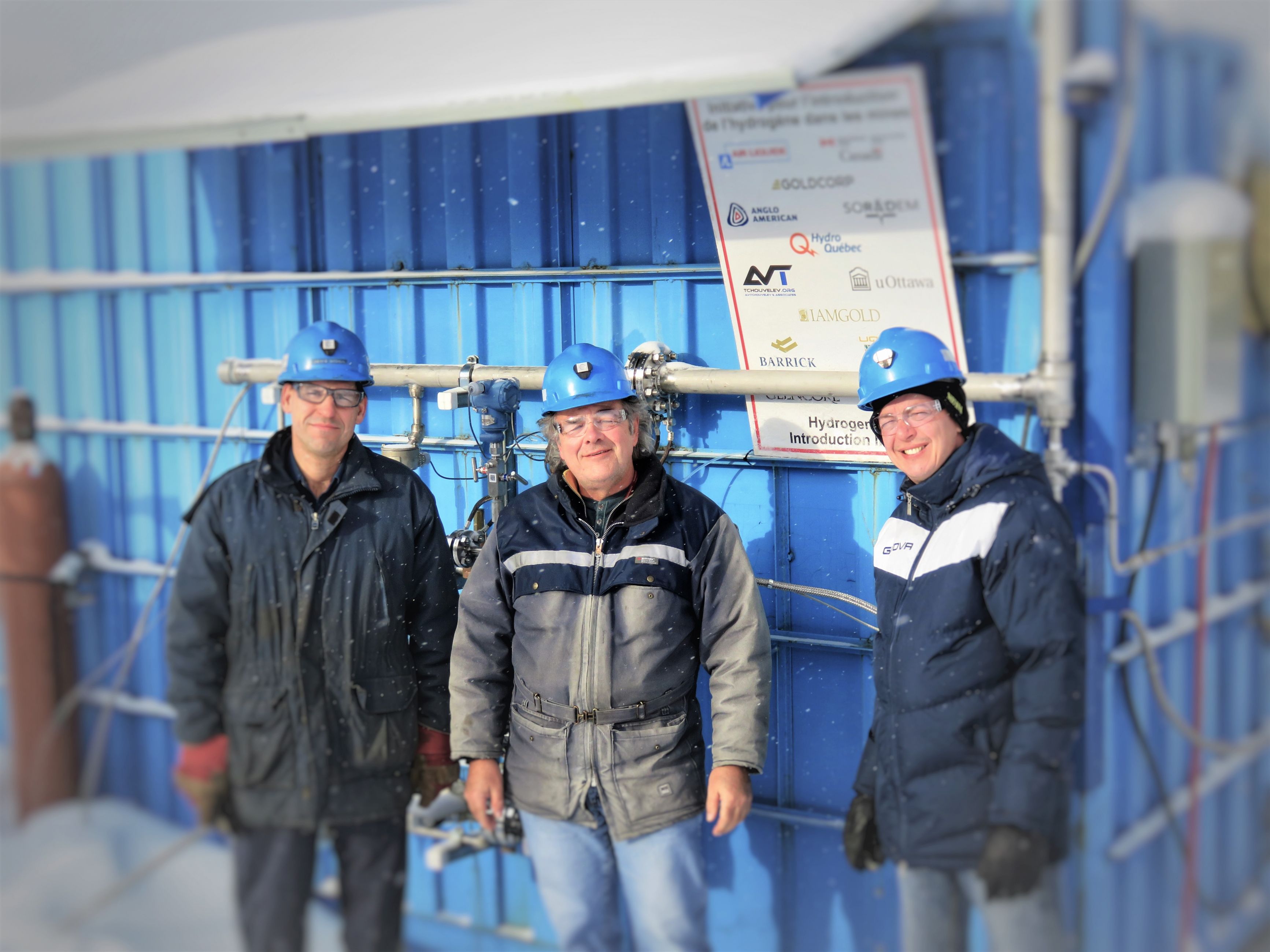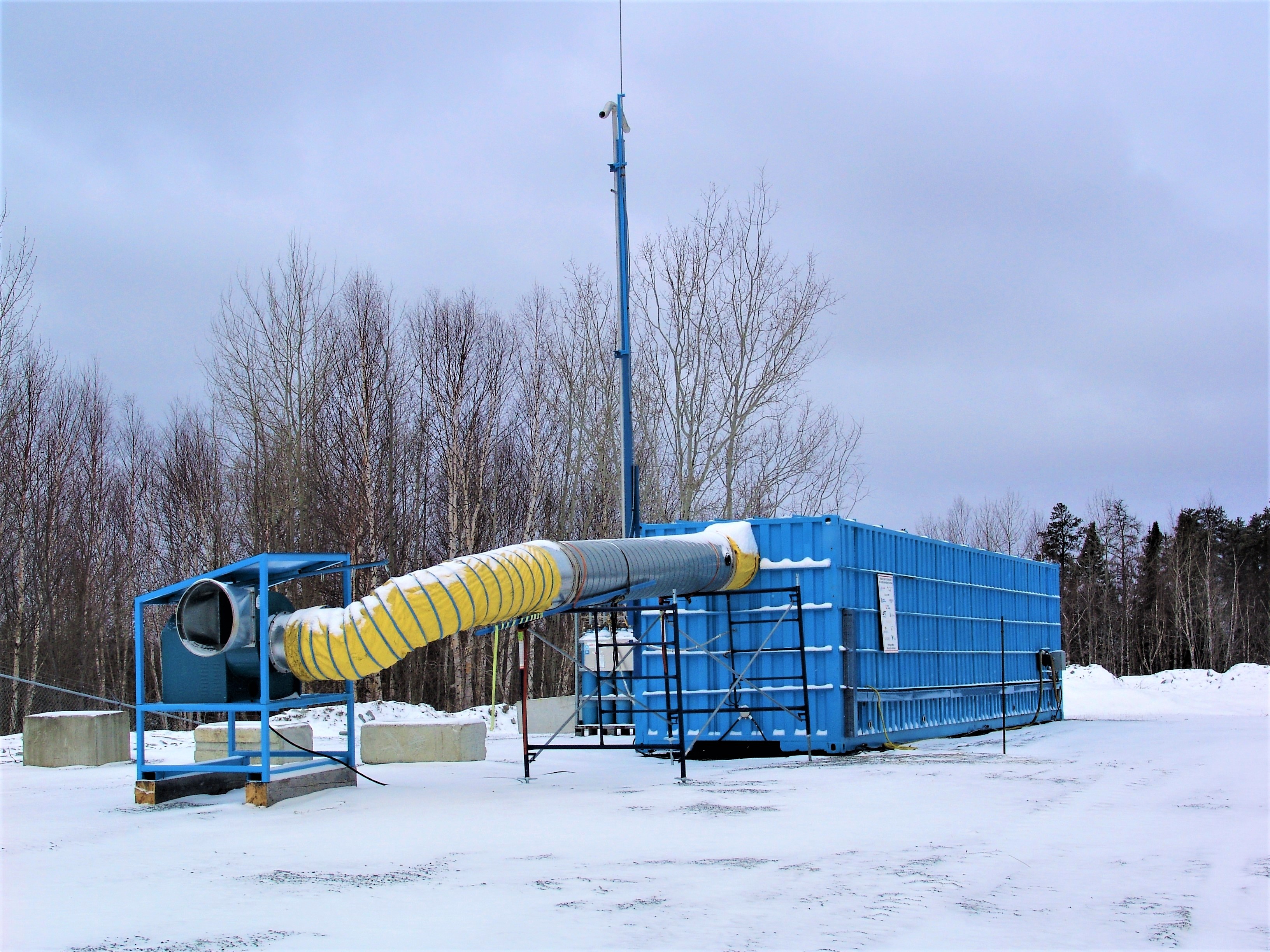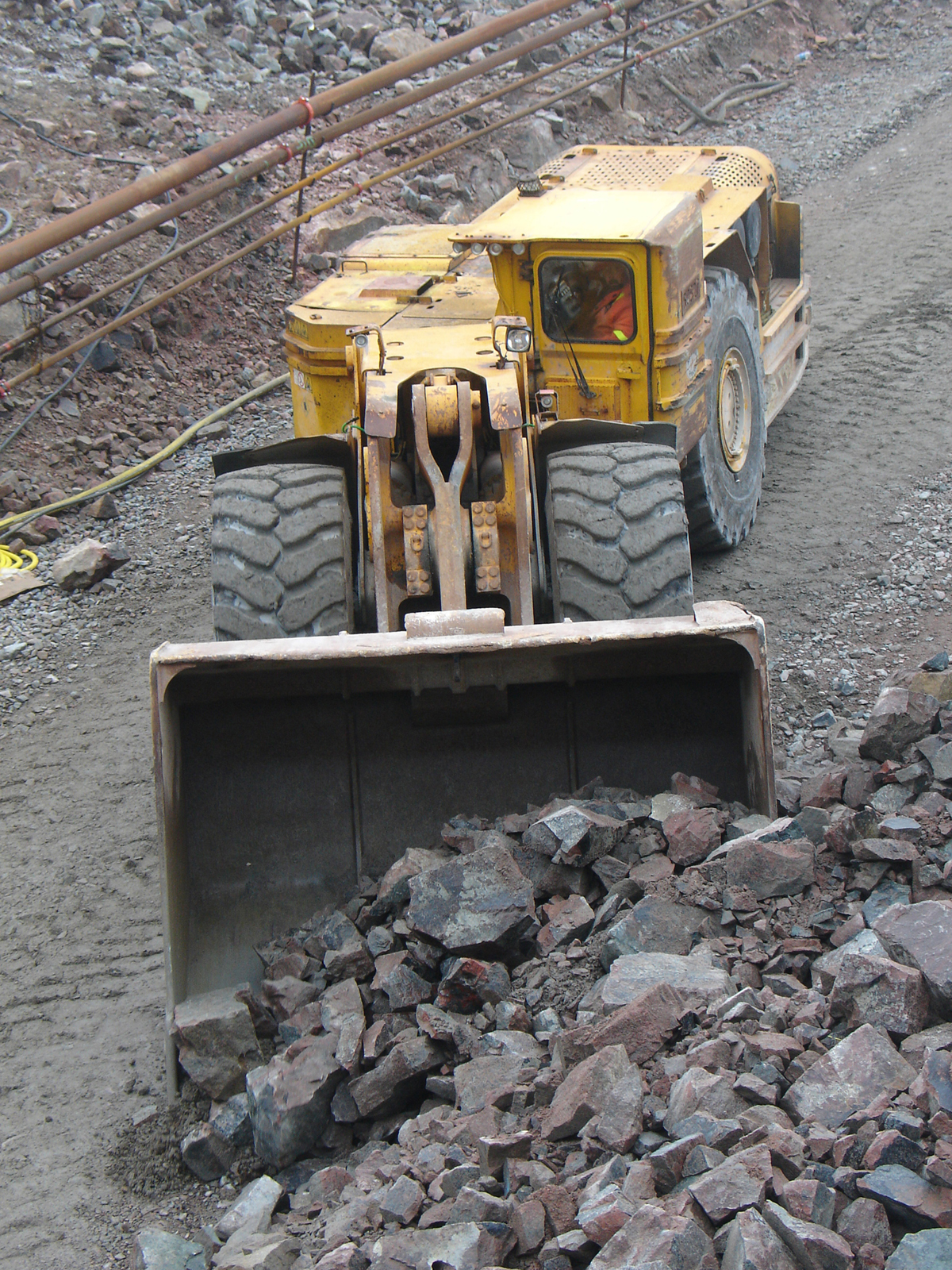By: Emma Bedard
March 1st, 2019
Hydrogen — the most abundant element in the world — has the potential to fuel underground mining vehicles, and Natural Resources Canada (NRCan) scientists are using its power in new technologies to bring clean energy to the mining industry.
Old science, new tricks

Part of the research team in front of the hydrogen test chamber in Val d’Or, Quebec.
Since Canadian mines currently rely heavily on diesel, finding a zero-emissions yet efficient alternative could transform the mining sector and bring it a step closer to a cleaner energy future. That’s why Gilles LeBlanc, a mechanical engineer at NRCan’s CanmetMINING, and his team have been intensively studying and testing an alternative fuel that could reduce the greenhouse gases emitted in mines by up to 25 percent. The solution? Hydrogen fuel cells, which combine hydrogen and oxygen to create energy. The process, known as reverse electrolysis, is not new, but the science behind it has taken decades to produce a viable energy source — and even longer to find a way to apply it safely.
Risky business
Because of several risks involved, maintaining a safe work environment is the primary challenge of bringing hydrogen into underground mines. Hydrogen can easily spread over wide areas, and it’s highly flammable at a wide range of concentrations. When mixed with oxygen, hydrogen gas concentrations anywhere from four to 75 percent can easily be ignited.

At the source of a leak (indicated in red), gas concentrations can be as high as 30%, well above the safety limit.
“If a spark ignites the hydrogen, then an explosion could occur, which is an unacceptable situation,” says Gilles.
In addition, since mines typically contain a series of underground tunnels, hydrogen leaks could have trouble diffusing safely to the surface and then into the atmosphere.
“So the team is studying ignition conditions, such as the minimum ventilation required to dissipate or reduce that gas concentration so it remains below the critical threshold where it can become dangerous.”
To find a solution, Gilles and his team are researching how hydrogen behaves in enclosed spaces, simulating underground mining conditions so that they can better predict how it will react.
Imitation game

The hydrogen test chamber, built from a reinforced shipping container, is resistant to flames and pressurized gas
They’re conducting their research at a specialized hydrogen test chamber located at NRCan’s experimental mine in Val-d’Or, Quebec, about 300 km northwest of Ottawa. Early tests had simulated leaks that could occur in a low-pressure hydrogen storage tank at 300 psi (pound-force per square inch), as this pressure was the standard at the time. However, as hydrogen storage tanks have since evolved considerably, pressures up to 6,000 psi are currently used. While this new standard drastically improves the efficiency of vehicles, it means that Gilles and his team now need to determine if high-pressure gas behaves differently than its low-pressure counterparts.
“We have begun computer simulations,” says Gilles, referring to the tests that are underway. “The results will show us if it’s possible to replicate [high-pressure] tests with the hydrogen test chamber and recommend best practices to put safety first.”

In the future, vehicles like these could be powered by hydrogen, significantly reducing emissions produced in mines.
A promising alternative
Even with the all work yet to be done, Gilles believes that hydrogen can help the mining industry lower its carbon emissions.
“We’re looking for alternative energy, and the hydrogen source is probably the best one for their needs.”
The zero-emission power generator is an eco-friendly replacement for diesel-powered engines. And fuel cells — unlike batteries — don’t need to be replaced or recharged. Hydrogen storage tanks, just like gas tanks, simply need to be refilled with a new supply of hydrogen. Plus, since they also have a higher capacity, they can run for longer times or power larger vehicles than batteries can.
A change for the better
New, cleaner energy sources of this kind are a growing demand, since industries are looking for ways to lower their emissions. And there are also economic motivations: as of April 1, 2019, all Canadian provinces will be subject to a provincial or federal carbon tax or other carbon emissions-reducing programs.
But thanks to the ongoing research of NRCan’s scientists, together with their partners from around the world, industries are now better equipped than ever to meet the needs of these programs and, in so doing, to take another step toward a green future.